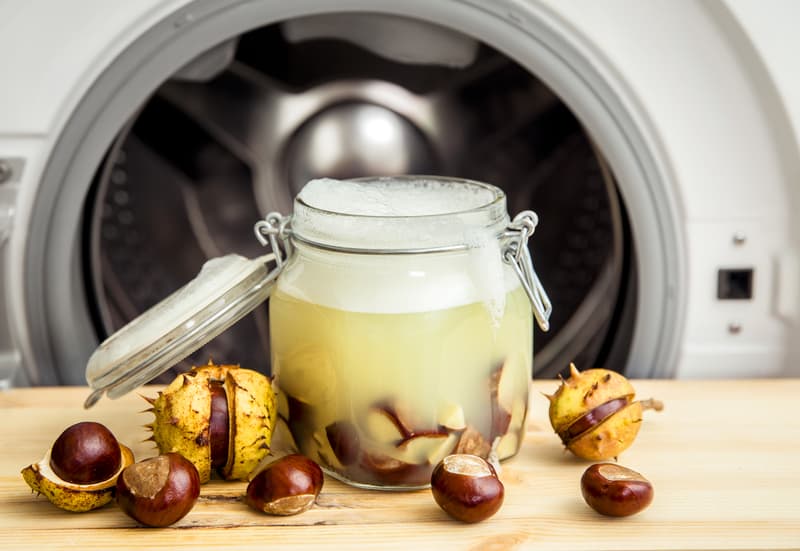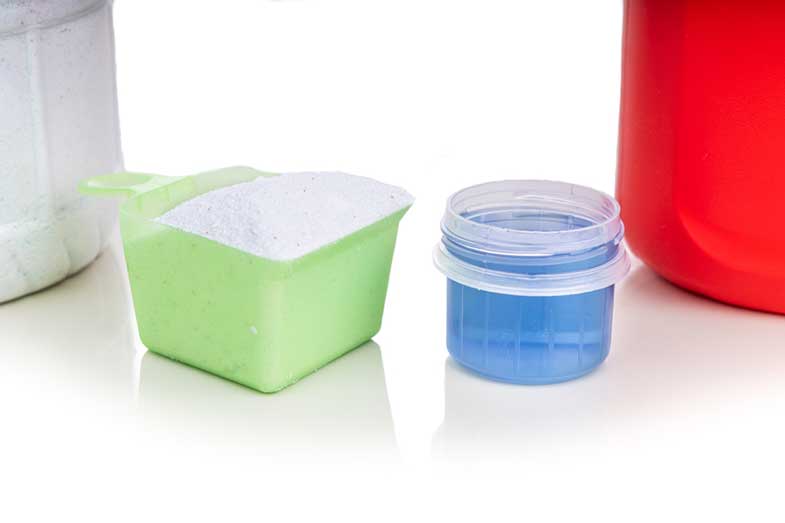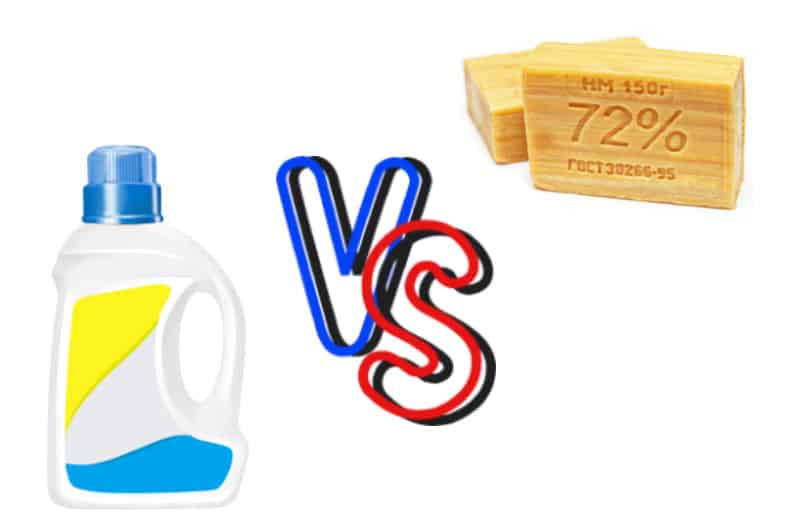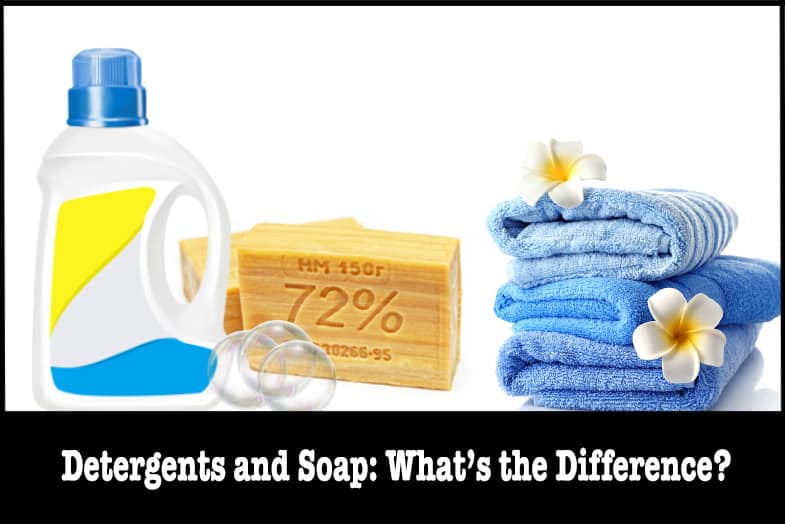People usually use the words detergent and soap interchangeably. But in reality, these two things are very different from each other. Both the detergent and soap are cleaning products that we use in our everyday life without understanding the actual mechanism behind them.
Detergents are made from synthetic chemicals, while soaps are prepared using natural ingredients. Soaps have limited applications, but detergents can be used to clean almost everything.
The purpose of using the detergent and soap is the same. But there is a significant difference in the ingredients that are used to prepare these products. This article will understand the difference between a soap and detergent and why you should use either of these.
What is a Soap?

The presence of fat and oil makes a substance a soap. In addition, soaps also contain water, alkali, and salt. All salts are not created equal. They can be traditional or milder. The formation of soap depends entirely upon the ingredients that are used to make it.
When soap is dissolved in water, it breaks the dirt. It is being used to clean things and surfaces, washing hands and hair for ages. Soap has also been used as an ointment and hair dye. The use of soap dates back to 2800 B.C. Today, the use of soap has been restricted to cleaning the body and clothes.
Preparation of Soap
Commercially, there are two methods for preparing soap. These are the kettle process and the continuous process. Unfortunately, the kettle process can prepare only a single batch; therefore, it is not beneficial for soap companies.
Kettle Process
A tank is used in this process, which is termed a kettle. Fats and alkali are added to this kettle to heat them and bring them to boil. After a while, the mass thickens, resulting in the formation of soap and glycerin. These two things are needed to be separated. For that, salt is added to the container. The chemical reaction causes the soap to rise, leaving the glycerin at the bottom.
Water is again added to the kettle to heat the remaining soap. After that, the substance is divided into layers. The top layer consists of 70% soap and 30% water. The upper layer is then separated and cooled.
How Does Soap Work?
The soap contains lipids (fats). One end of fats is hydrophobic (oil-loving), and the other end is hydrophilic (water-loving). This means that the dirt on our hands or the clothes can bind to oil and water in the soap. So as you wash your hands with water, the dirt, along with soap, gets removed.
Since soaps are made with completely natural ingredients, they are not harmful to our clothes in any way. Soaps are biodegradable and do not affect aquatic life. The problem occurs only when the soap reacts with the minerals present in water. This results in the formation of a grey film on the clothes.
Soaps can be bought from the market as well as they can be prepared at home. The home preparation method of soap is quite different from the commercial method. The hot and cold processes are the two methods that are used to make soaps at home.
Soaps Ingredients
The fat required for making soap is usually obtained from beef tallow. It is a natural source of fat that is very cheap. This beef tallow is saponified to make soap. Since beef tallow is very cheap, the soap made from it is not of high quality. It can cause acne and many other skin problems.
A better solution to it is natural oils. Oils like castor and coconut are best for making quality soap that can effectively remove stains. These oils even retain glycerin, which makes a soap even more effective.
What is a Detergent?

Unlike soap, detergent is made from synthetic chemicals. The main component of detergent is surfactants (surface active agents) and phosphates. Surfactant detergents are toxic, while phosphate detergents are caustic. Due to the harmful effects of phosphate detergents on humans and the environment, it is banned by the government of many countries.
Detergents are used for many different purposes. You can clean cars, utensils, clothes, floor, and hence everything with detergent. Detergents for cleaning specific things are available in the market.
Other than surfactants, various manufactured chemicals are used to make detergent. For example, bleach is added to the detergent to keep the clothes bright and clean. Also, many different enzymes are used in detergent to remove the stains effectively from the surface.
Fragrances, dyes, fillers, optical brighteners, and many different chemicals are also used in detergent for a fresh smell and brightening of the clothes.
Read More: Laundry Detergent: Before or After Clothes?
Preparation of Detergent
Preparation of detergent begins with the collection of raw material. The raw material is collected based on several factors.
The manufacturing process begins with the formation of premix, which is a combination of soap and surfactant. This premix acts as a base in which other ingredients are blended. This premix is formed by the neutralization of fatty acids with potassium hydroxide.
After this step, the rest of the ingredients are added to the premix. First, this premix is placed at a high temperature. Then, ingredients like preservatives, fragrances, water, and sulphonic acid are added.
This mixture is then cooled, after which enzymes are added to it. The enzymes are in powdered form.
How Does Detergent Work?

The working of detergent is very similar to soap. The detergent molecules break down the dirt and grease particles. These particles are then carried away with water.
Detergent comes in the form of liquid, powder, and pods. The function and results of soap and detergent are very similar.
The presence of surfactants in detergents plays a significant role in cleaning. Surfactants work by reducing the surface tension of water. This helps break up the dirt from the clothes and, thus, their easy removal.
Detergents Ingredients
As mentioned before, the main constituent of detergent is surfactants. Other than that, foaming agents and alcohol also play an important role in the cleansing process. However, the natural odor of these synthetic chemicals is unbearable. Therefore, artificial scents and fragrances are added to the detergents.
Preservatives and antibacterial agents are also used in detergent to increase its shelf life. Since detergent has to stay on shelves for years, these ingredients must help detergent last longer. However, these ingredients are actually very harmful as they can cause allergies and other skin problems.
Other than these ingredients, biological enzymes are also added to the detergent. However, a single type of enzyme can remove only a specific stain from clothes. For instance, the protease enzyme can only remove protein stains from clothes.
Read More: Can Your Detergent Impact Your Acne and Skin?
Soap vs. Detergent: What’s the Difference?

The debate between soap and detergent ends on the ingredients of these products. The detergent is made of synthetic and harmful chemicals, while the soap is made with natural chemicals.
The presence of natural oils like castor and coconut oil makes the soap a biodegradable product. On the other hand, detergent is made completely with synthetic chemicals except for enzymes. This is why detergent is not biodegradable.
Soap can be found in liquid and bar form only. In contrast, you can find detergent in liquid, powder, and pods. Soaps are also more expensive than detergents.
Which One is Better for Laundry?
Though laundry detergent is toxic and not biodegradable, yet it is best at cleaning clothes. Laundry detergent contains bleach, surfactants, and optical brighteners. These ingredients remove the stains effectively and make the clothes appear brighter.
Soaps lack all these ingredients. This is why a soap cannot remove stains from the clothes as effectively as a detergent does.
Also, it is difficult to wash laundry with soap in hard water. This is because soap forms scum in hard water. This leaves stains and spots on the laundry. Soap is also likely to turn the whole laundry gray, which is very difficult to remove.
Nevertheless, the benefits of laundry detergent come with a cost. It is highly toxic and dangerous for our environment. The synthetic chemicals present in detergent affect our skin and cause several problems. They also cause disturbance in our respiratory system. The better solution to this problem is the use of eco-friendly laundry detergent. It is made with the maximum natural chemicals and is less toxic to our environment.
In Conclusion
Both soap and detergent are used for cleaning. The major difference between these products lies in the ingredients. Detergent is made with more synthetic chemicals, while the soap is prepared with natural ingredients.
Other than that, both these products react differently to hard water. Soap is likely to leave residues on the clothes if washed in hard water. This is because the chemicals in soap react with minerals in hard water. This makes soap a bad option for washing laundry.
However, the working mechanism of soap and detergent is quite similar. The presence of surfactants in detergent makes it more effective against dirt and grease as it reduces the surface tension of water. In the case of washing laundry, a detergent is the best option. It is even better to go for an eco-friendly detergent to protect the environment from unwanted damage.

